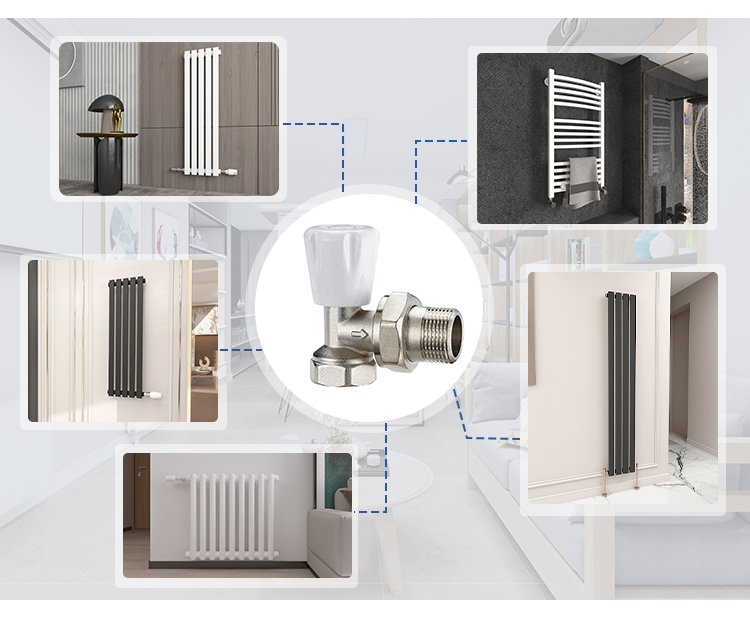Struggling to keep your home warm while battling high heating bills? It’s frustrating when radiators don’t work right—leaving you cold or costing a fortune. Poorly managed valves can make it worse, but don’t worry! Understanding the two valves on your radiator can solve these headaches and save you money. Stick with us to learn how.
The two valves on a radiator are the thermostatic radiator valve (TRV), which controls room temperature by adjusting hot water flow, and the lockshield valve, which balances the heating system by regulating water output. Together, they ensure efficient heating and comfort.
Curious about how these valves work and how to use them? Keep reading—we’ll break it down step-by-step so you can master your radiator and enjoy a cozy, cost-effective home.

What Is the Best Setting for Radiators?
Finding the best setting for your radiators can feel tricky, but it’s simpler than you think. The thermostatic radiator valve (TRV) has numbers—usually 0 to 5. Setting it to 3 (around 20°C) is a comfy spot for most homes. In colder rooms, nudge it to 4; in warmer spots, drop it to 2. The lockshield valve, though, isn’t for daily tweaks—it’s set during installation to balance water flow across your system. Messing with it might throw things off, so leave it alone unless you’re a pro. Wondering is it safe to close radiator valve completely? Yes, setting the TRV to 0 stops water flow safely, but don’t touch the lockshield without know-how. With IVALVECRAFT’s brass thermostatic radiator valves, you get stable performance and easy control—perfect for keeping Antonio’s Russian winters at bay without breaking the bank.
Does Turning Down Radiators Save Gas?
Let’s tackle a big question: does turning down radiators really cut your gas bill? Yup, it sure can! When you lower the TRV in rooms you don’t use much—like a spare bedroom—you’re telling the radiator to use less hot water. Less hot water means your boiler burns less gas. Simple, right? But here’s the catch: don’t mess with the lockshield valve thinking it’ll help—it won’t, and it could unbalance your system. Folks like Antonio, who weigh quality and price, love this trick. Pair it with IVALVECRAFT’s pressure-reducing valves for steady flow and no waste. Oh, and if you’re wondering how to turn off radiator water supply entirely, just twist the TRV to 0—no gas wasted there! It’s a smart move to keep costs down, especially during Russia’s chilly peak seasons.
How Do You Adjust a Danfoss Thermostatic Radiator Valve?
Got a Danfoss thermostatic radiator valve and not sure how to tweak it? No sweat—it’s easy once you know the steps. First, find the TRV—it’s the one with numbers, usually on the side of your radiator. To adjust it, just turn the dial: higher numbers (like 4 or 5) mean more heat, lower ones (1 or 2) cool things down. Want to shut it off? Spin it to 0—great for how to turn off radiator in apartment vibes. Don’t force it past the stops; Danfoss builds them sturdy, but they’re not invincible. If it’s stuck, a gentle wiggle usually does the trick—how to open radiator valve sorted! IVALVECRAFT’s brass TRVs match Danfoss quality, offering Antonio’s team reliable flow and export pressure for those big Russian orders. No tech skills needed—just twist and enjoy the warmth.
Wrapping It Up
So, there you have it—the two valves on your radiator are the thermostatic radiator valve (TRV) and the lockshield valve, your duo for cozy, efficient heating. We’ve covered the best settings (around 3 on the TRV), how turning them down saves gas, and even how to adjust a Danfoss TRV like a pro. Whether you’re asking how to turn off old radiator or how to turn off radiator water supply, it’s all about that TRV dial. These tips keep your home warm and your wallet happy—no more missed sales from delayed shipments or unstable performance. With IVALVECRAFT, you’re not just getting valves—you’re getting peace of mind.
Choose IVALVECRAFT, choose reliable partner, enjoy the high quality and best service.


